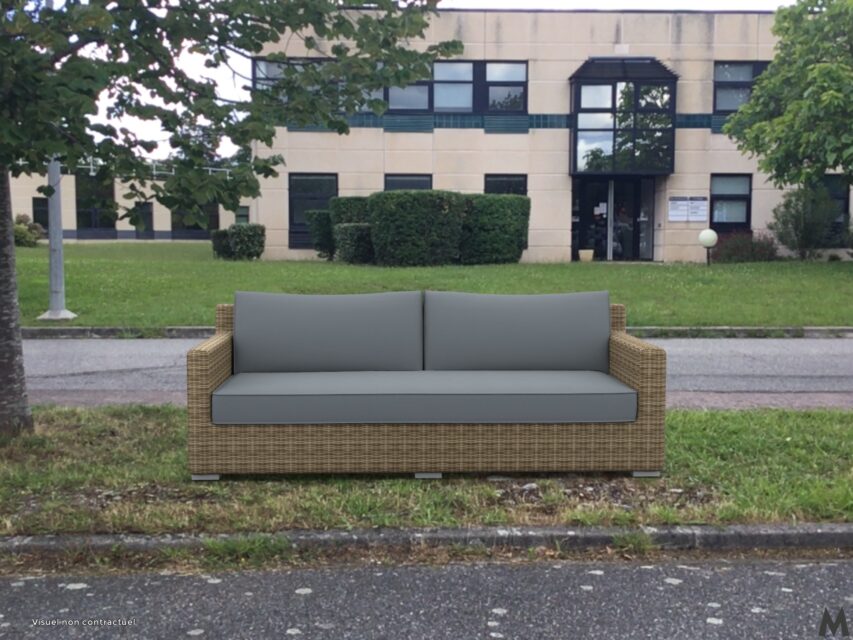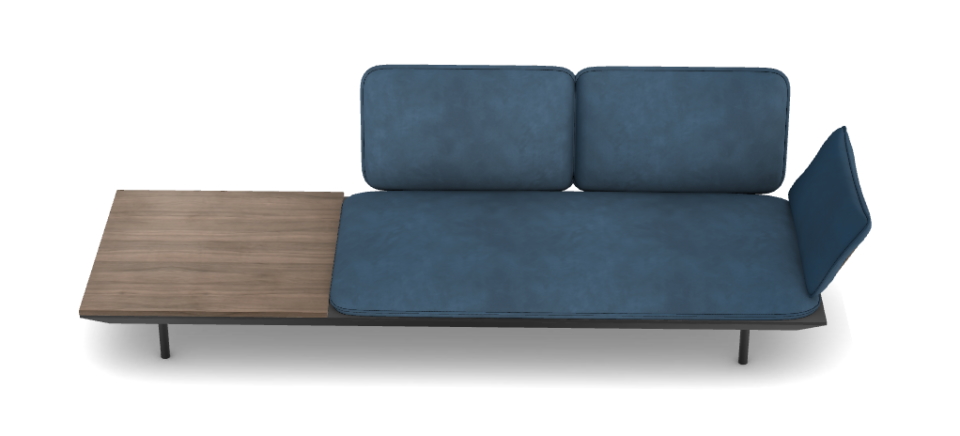Web AR turns the furniture industry upside down
Written by Fanny DESBOIS
Augmented reality is on the rise. According to IDC, spending on augmented reality (AR) and virtual reality worldwide is expected to reach $18.8 billion by 2020. In addition, the Gartner Institute predicts 100 million shoppers will be using augmented reality in the same year. Finally, Tim COOK, CEO of Apple, said on the occasion of the announcement of the 1st quarter 2020 results: “There are consumer applications and there are enterprise applications. This is the reason we’re so excited about AR. You rarely have new technology that both business and consumers see as key to them. That’s the reason I think it’s going to pervade your life – it’s going to go across both business and home life.”* One can easily come to the conclusion that augmented reality is becoming unavoidable for brands today. And icing on the cake, the technology is made even more accessible with the arrival of Web AR. Explanations
Réalité augmentée versus Web AR
Reminder: definition of augmented reality
As you probably know, augmented reality (AR) is a technology that allows you to project a virtual element into an existing environment in real time. Until now, the use of this technology has necessarily involved downloading an application. The user had to leave his web page to go to Google or Apple stores to install an application. With a compatible phone it is therefore possible to benefit from this technology through mobile games such as Pokemon GO or applications from furniture manufacturers and distributors for example, such as Maisons du Monde 3D at home, Mah Jong 3D (application from Roche Bobois) or Duvivier Canapés and Ikea Place.
Technical definition of Web AR
Web AR refers to augmented reality available directly from a web browser using a smartphone or tablet. The product presented by a brand on its e-commerce site will offer you to click on a button (only if your device is RA compatible) that calls up a personalized URL. This URL allows you to download an object that will be detected by the browser as being “optimized” for augmented reality. The user remains in his web browser and can project the object in 3D.
To go further: We use a specific format for augmented reality. The browser detects the format of the 3D object: USDZ for iOS and GLB for Android. At that moment, the browser loads a native application in the phone – ARCore for Android or ARKit for Apple – and automatically triggers the smartphone’s camera.
If you have a compatible smartphone, make a test:
Open a Google page and enter “horse”. You will come across an animated horse modelled in 3D. By clicking on see in 3D, you will then be able to activate the augmented reality option to project the animal in your garden for example!


Use Case
To take a concrete use case, the approach is simple:
- First of all, integrate a 3D web configurator on the pages of the products concerned.
- Make sure that the 3D objects used are compatible with web formats for augmented reality.
- All users who log in from a compatible device will have the augmented reality functionality available
This technology promises a strong impact on the customer and everyone will be able to visualize a product in the environment of their choice. Another great step forward for the customer journey!
A great asset for the customer journey
Augmented reality has brought about a profound change and offers fun and high-performance uses, particularly in retail and manufacturers. The technology has experienced tremendous growth but had its limits since it was necessary to download an application, which was a breaking point in the consumer journey.
With the multiplication of media and platforms where brands can be present to sell, inform and seduce, we always come back to the customer journey. The omni-channel strategy aims to make the user experience as fluid as possible. The downloading of an application in the middle of the journey represents an obstacle and increases the risk of losing the potential consumer. From now on, augmented reality will be easily accessible and will no longer represent a break in the user experience. That’s the revolution. While browsing an e-commerce site, the user will be able to project an object or a piece of furniture where it is (if the brand has chosen to implement this option, you will have understood it).

HomeByMe now offers its Web AR tool. Evolution UX (User Experience) undeniable, the technology allows to optimize the sales pipeline and is placed as an additional element of reinsurance. No more question here of a break in the purchasing process and real added value for the furniture and home players.
One more step in the digital transformation of the industry! Ready to start with us?
#Stay tuned
